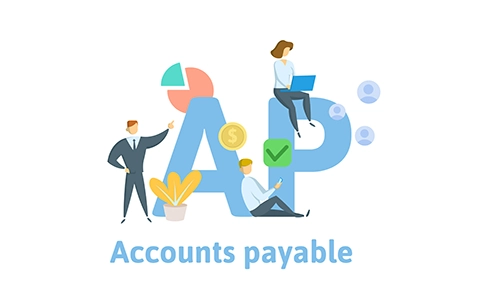Putting Efficiency First – Use DocLink to Automate Accounts Payable Processing

And as a back-office function, accounts payable isn’t always front and center as businesses look for ways to leverage technology to build efficiencies, improve transparency, and promote collaboration. Yet for many companies, accounts payable is a paper-intensive, manual task — one that could benefit significantly from what technology can offer. Let’s take a look at the typical manual workflow of many payables departments, and highlight what you may already know, that technology is available to transform this workflow from a cumbersome burden into an efficient progression. But first, have a look at these sobering statistics*:
- The average document gets copied 19 times
- 5% of all documents get lost, another 3% get misfiled
- Professionals spend 5-15% of their time reading information, but 50% of their time looking for it
1) Is it legit? Receiving the vendor invoice
The first step in the payable process begins when you receive a vendor invoice, either by mail, email, fax, or electronic file transfer. Regardless of how you get it, you first have to establish it is a legitimate charge. Chances are you do this by either passing a printed copy of the invoice to the appropriate manager or emailing them an electronic copy. Probably there is some supporting paperwork with the invoice that needs to be routed and stored as well.
Next, you have to track who you sent what to and when you sent it and remind the managers when they are tardy with their responses. There’s a real risk that important documents get lost or misrouted along the way. Multiply this by hundreds of invoices and dozens of managers, and you’ve got the potential for chaos.
2) It’s all good. Entering the vendor invoice
Once a manager has approved that an invoice is legitimate, the next step is to enter that invoice into your ERP software. Even if you receive the invoice electronically, it’s typically a manual process to transfer the information from that electronic document into your accounts payable software.
Accounts payable clerks may spend most of their time simply reentering payable data from a vendor’s invoice when that time could be spent on more value-added tasks. In addition, if the manual approval process took too much time, your company could miss out on early payment discounts.
3) Print and copy. Producing the checks
When it comes time to pay those invoices, you may print paper checks, match a copy of the check with the original invoice and supporting documents, and send the stack off to be filed.
Files — you know that wall of file cabinets in the back room? Filing paper documents is a costly efficiency killer, but it’s still the norm in many offices.
4) Wait – I have a question! Retrieving the file.
When someone within your organization needs to review an invoice or the supporting documents associated with it, chances are they head to the file cabinets. But what if they don’t remember the vendor’s name? Or what year the invoice was processed? Or what if they want to review all invoices associated with a particular project, or a specific manager? Paper files are only searchable by that little paper label you put on the tab.
Time to Automate
If one or more of these steps in the accounts payable process sounds familiar, your company could benefit from deploying DocLink in your accounts payable department. DocLink is designed to minimize paper processing and manual approval routing while maximizing productivity, efficiency, and transparency. While AP automation technology is not new, many companies are slow to adopt it or adopt it fully, and as a result, are missing out on the measurable benefits.
Learn more about how DocLink can automate processes in your organization by joining us for one or both of these upcoming webinars, Extend the Value of your Sage ERP with DocLink, on July 22nd at 2pm CDT – Click here to register for July 22nd and/or AP Automation Made Easy with DocLink for Sage on July 29th at 2pm CDT – Click here to Register for July 29th. You may also review one of our recorded events at your convenience. Here’s the link to our library of DocLink webinars. As always, you can contact us with your questions.
*Source: PricewaterhouseCoopers




